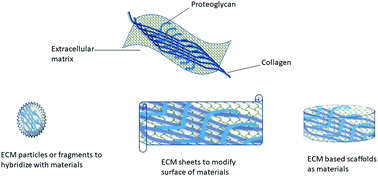Decellularized orthopaedic tissue-engineered grafts: biomaterial scaffolds synthesised by therapeutic cells
Abstract
In orthopaedic surgery, the reconstruction of musculoskeletal defects is a constant challenge. Biomaterials in tissue engineering are utilized as scaffolds which serve as templates for cell proliferation and secretion as well as guides for new tissue formation. The extracellular matrix (ECM) is a desirable biological scaffold due to its complex composition and three-dimensional ultrastructure, which drive the homeostasis and regeneration of tissues. Successfully used in a variety of regenerative medicine applications, ECM scaffolds can be achieved by decellularization of engineered tissue. In addition to using decellularized grafts directly as scaffolds, decellularized grafts can also be coated on or incorporated into synthetic biomaterials to substantially enhance their biological performance regarding integration into the surrounding tissue and bioactivity for neo-tissue generation. However, at present, the most widely adopted decellularized scaffolds are decellularized native scaffolds, which have the limitations of inherent heterogeneity, fixed shapes and insufficient sources. Decellularized tissue-engineered scaffolds are promising to avoid these restrictions and are receiving attention in the regenerative medicine field. This review describes the rationale of using decellularized tissue-engineered grafts for different regenerative purposes and details their application in the repair of orthopaedic defects.



 Please wait while we load your content...
Please wait while we load your content...